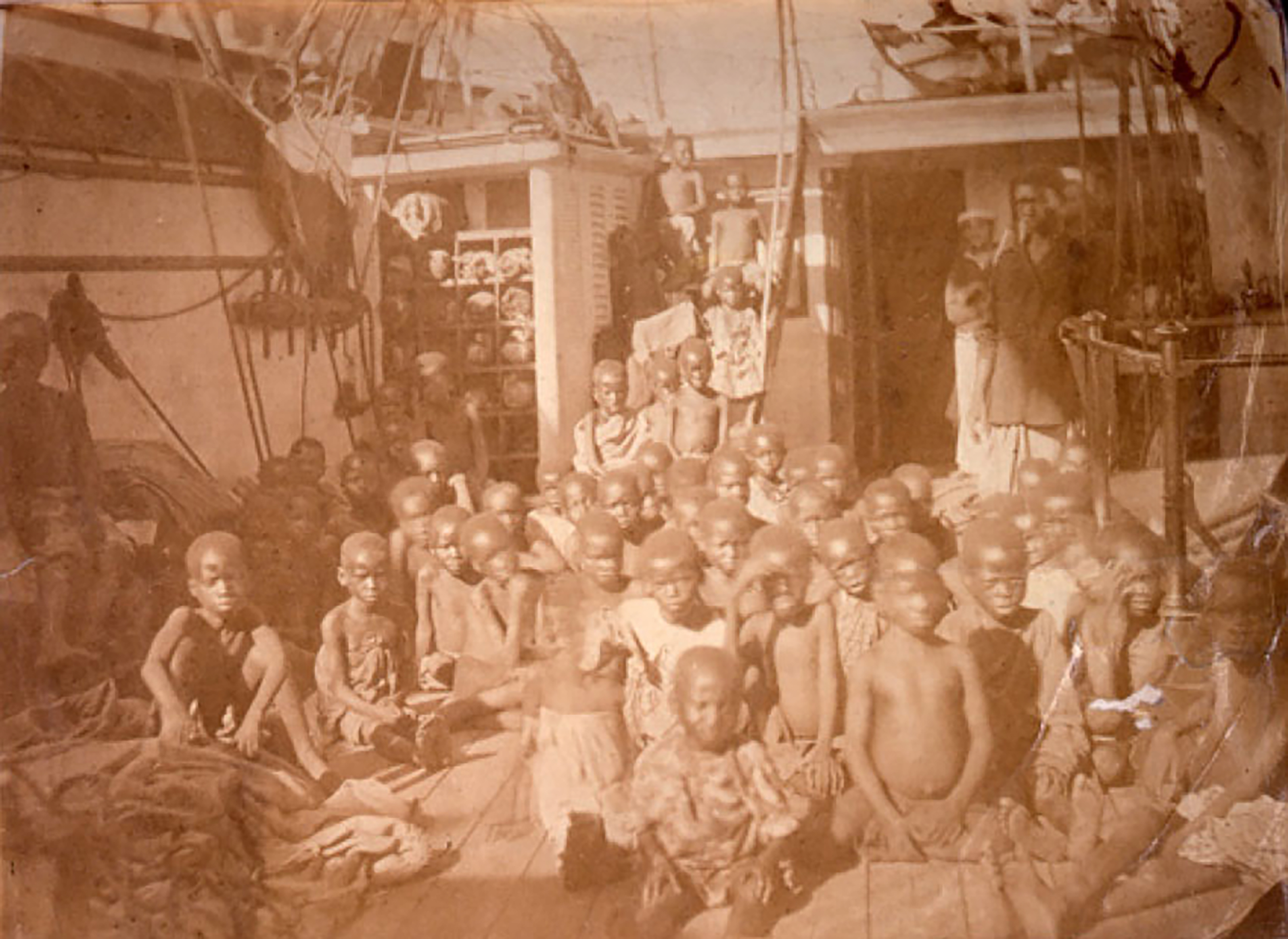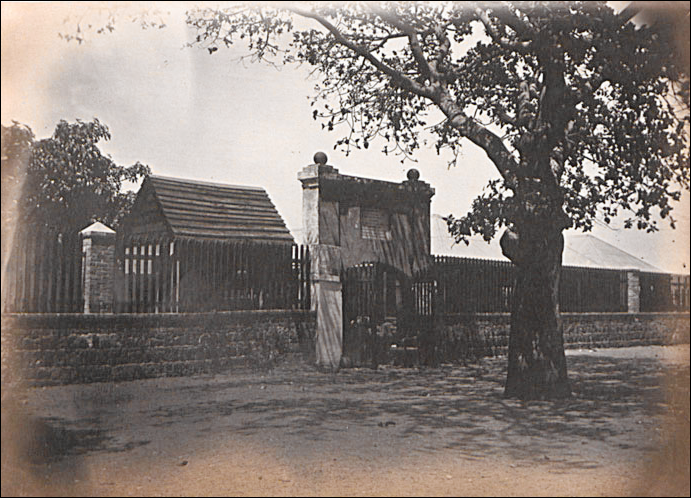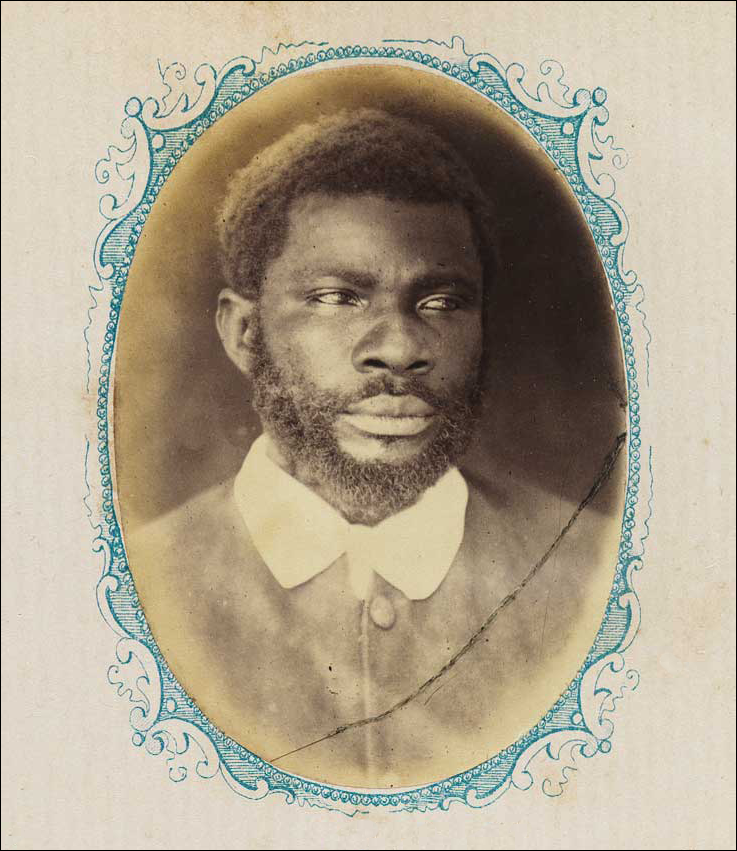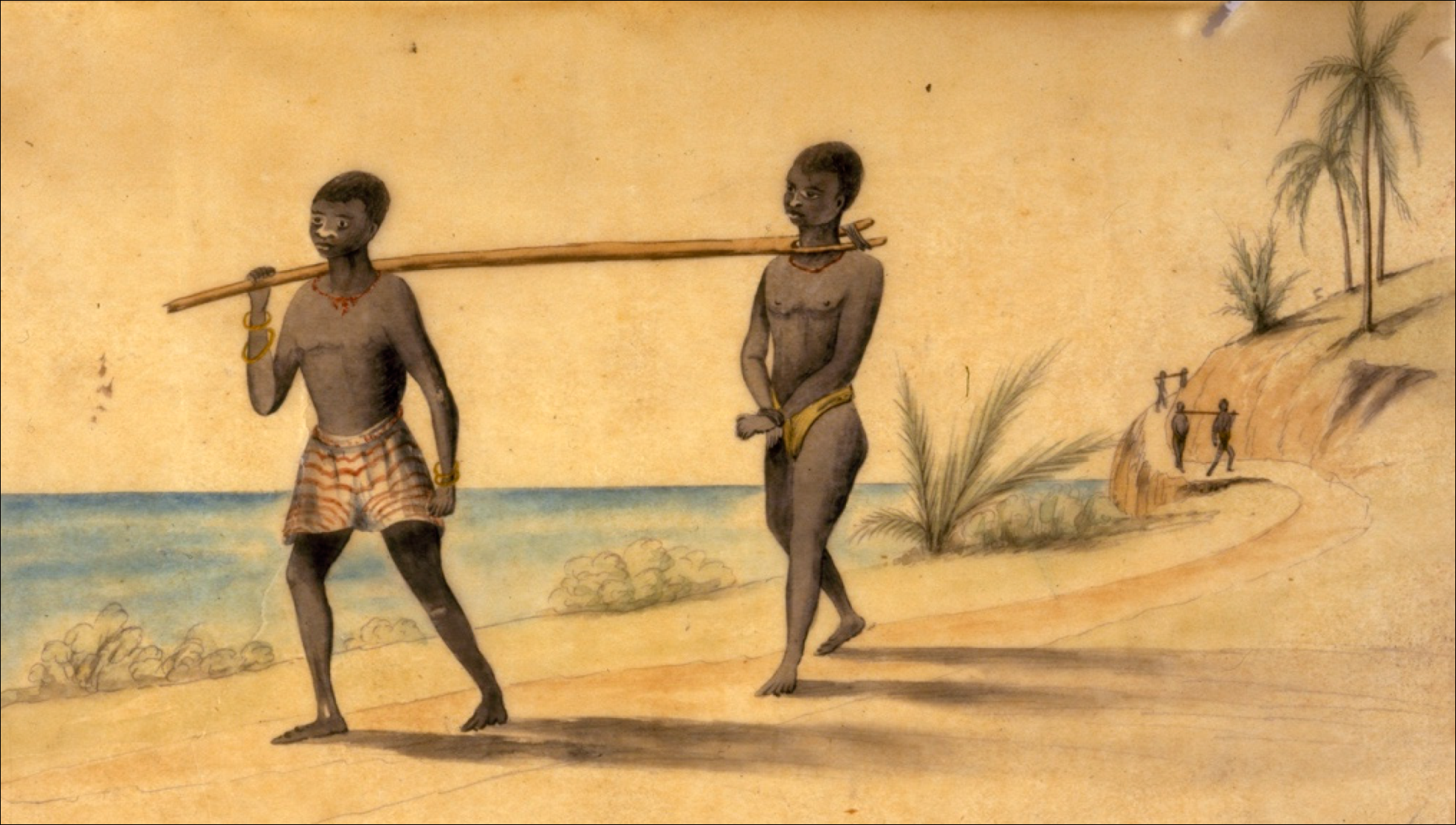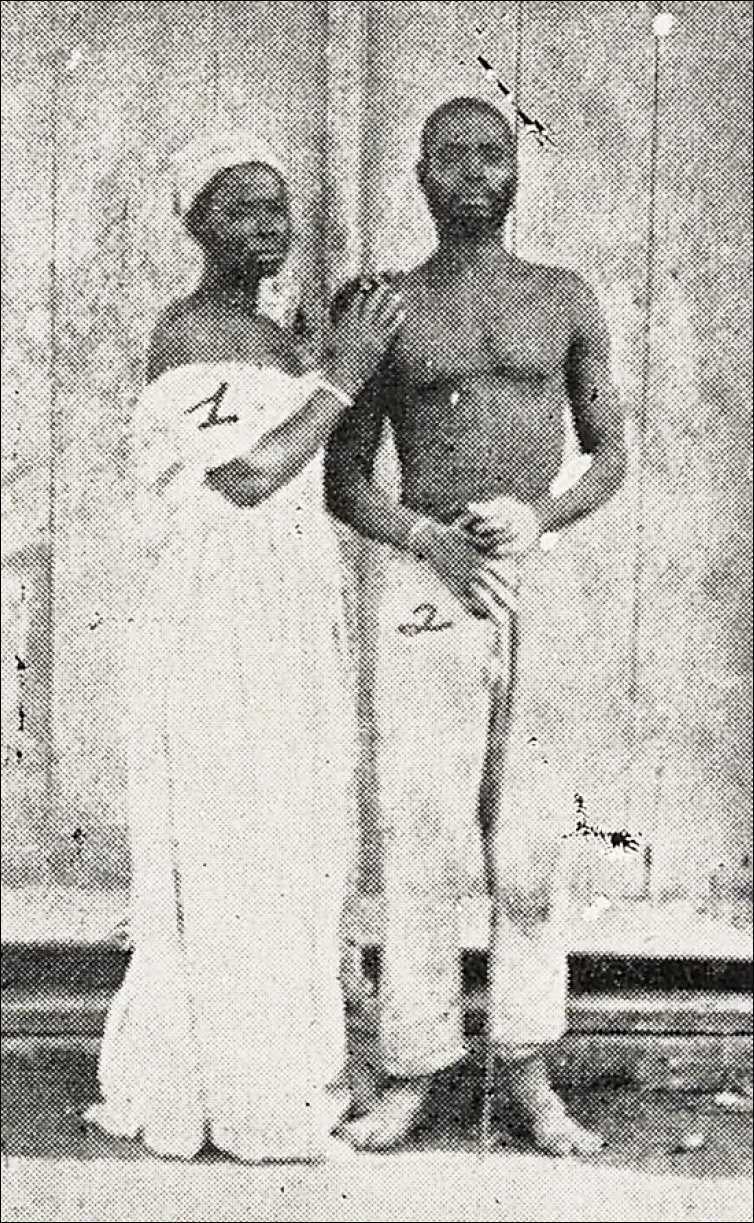Defining "Liberated Africans" and Other Related Terms
|
"Liberated African" children sitting on the deck of the Daphne shortly after their capture. The National Archives, UK, FO 84/1310, 1869, f. 193-195. |
This quantitative and qualitative study focuses on enslaved people involved in the global abolition and suppression of the slave trade from Africa between 1800 and 1920. In order to conduct a global survey, it is essential to define “Liberated African” and related terms. As made evident in anti-slavery legislation and judicial processes, the concept of “Liberated African” was translated, adopted, and adapted in different languages and legal systems. The nuances of meanings changed over time depending on historical contexts.
The scope of this survey centers on instances of "Liberated Africans" and related terms documented in the primary sources. Usages generally referred to enslaved people from Africa who were condemned, purchased, or sought asylum, and subsequently emancipated through state intervention and subjected to indentures or conscriptions. In historical sources, “African,” “Slave,” or “Negro,” as well as “Liberated,” “Freed,” or “Emancipated” could all be used interchangeably. In many contexts, “Liberated African” was synonymous with “Liberated Slave,” “Liberated Negro,” “Freed African,” “Emancipated Slave,” etc… In other contexts, similar terms referred to other ways in which people could achieve freedom. This survey does not track the liberation of enslaved people via other legal processes, such as benevolence, self-purchase, or armed resistance resulting in self-liberation.
This glossary defines “Liberated African” and related terms as they were recorded in English, Portuguese, French, Spanish, German, Dutch, Indonesian, Turkish, and Italian.
English
"Liberated African" referred to enslaved people from Africa taken off slave ships or seized on land usually in costal locations, condemned as property, and declared free under any of the acts or treaties for the abolition or suppression of the slave trade. Under state control, these freed people were then subject to periods of indenture or conscription lasting several years. By extension, the term was applied to similar situations in which enslaved people from Africa were purchased or sought asylum from slavery, and were then emancipated through state intervention and subjected to comparable indentures or conscriptions.
|
"The Liberated African Yard, Bathurst, Gambia," c. 1870, The National Archives, UK, CO 1069/88. |
"Freed Slave" was synonymous with “Liberated African” when used in the above context of enslaved people from Africa being emancipated through state intervention and subjected to indentures or conscriptions.
"Emancipated Slave" referred to someone who was enslaved and legally given their freedom. It was synonymous with “Liberated African” when used in the context of enslaved people from Africa being freed legally through state intervention and subjected to indentures or conscriptions.
"Prize Slave" was synonymous with “Liberated African,” although “prize” indicated the capture of a slave ship or coastal barracoon during armed conflict. The “prize” included the subsequent confiscation and condemnation of the ship’s equipment and cargo, which included enslaved people as property. After, these people were emancipated through state intervention and subjected to indentures or conscriptions.
"Apprentice" was synonymous with the term “Liberated African” and “Indenture.” As specified in the British Abolition Act of 1807, an “Indenture of Apprenticeship” was an involuntary, unpaid labor contract assigned to an enslaved person emancipated through state intervention.
"Recaptive" is a term modern-day scholars often use to highlight the questionable process of how enslaved people involved in the suppression of the slave trade faced displacement and forced labor, albeit by government legal action rather than private slave traders. People were first enslaved in Africa, then recaptured through state intervention and subjected to involuntary indentures or conscriptions.
"Liberty Village" or "Liberty Farm" referred to a place where a government or a government sanctioned mission operated a settlement of enslaved Africans who had sought asylum from slavery during the colonization of Africa. These people were emancipated through the intervention of colonial governments, placed into a settlement, and subjected to indentures.
"African Asylum" was a unique name given to an orphanage and school for enslaved children in Nasik, India, who were emancipated through state intervention and cared for by Christian missionaries.
"Touts" referred to a type of recruiter or broker often linked to involuntary contract labor schemes operating between Calabar in colonial Nigeria and Spanish plantations in Fernando Po. In this historical context, touts, also known as ganchos in Spanish, recruited laborers by using deceptive strategies. Panya referred to a technique that misinformed recruits about type of work or destination. Dash referred to a wage advance paid to recruits that usually resulted in debt bondage or peonage.
|
"Adelino, Africano Livre." Biblioteca Nacional Digital, Brasil, Galeria dos condenados, 345.0300981, 1865. |
Portuguese
"Liberto" lit. “Liberated” was used as a direct translation from English for “Liberated African” and referred to enslaved people from Africa taken off slave ships or seized at coastal locations, condemned as property, and declared free under any of the acts or treaties for the abolition or suppression of the slave trade. Under state control, these freed people were then subject to periods of indenture or conscription lasting several years. By extension, the term was applied to similar situations in which enslaved people from Africa were purchased or sought asylum from slavery, and were then emancipated through state intervention and subjected to comparable indentures or conscriptions.
"Africano Livre" lit. “Free African” was synonymous with “Liberto” and a direct translation from English for “Liberated African” when used in the context of enslaved people from Africa being emancipated through state intervention and subjected to indentures or conscriptions.
"Serviçal" lit. “Servant” referred to the recruitment of contracted laborers from enslaved populations in Portuguese colonies in west and east Africa in the late nineteenth and early twentieth centuries. Most of these involuntary people were "liberated" by state intervention and taken to São Tomé and Príncipe as indentured labor.
French
"Libéré" lit. “Liberated” was used as a direct translation from English for “Liberated African” and referred to enslaved people from Africa taken off slave ships or seized at coastal locations, condemned as property, and declared free under any of the acts or treaties for the abolition or suppression of the slave trade. Under state control, these freed people were then subject to periods of indenture or conscription lasting several years. By extension, the term was applied to similar situations in which enslaved people from Africa were purchased or sought asylum from slavery, and were then emancipated through state intervention and subjected to comparable indentures or conscriptions.
|
"A French Free Emigrant on his way to the Barracoon of M. Regis." The National Archives, UK, FO 84/1070, 1858, f. 126. |
"Africain Libre" lit. “free African" was a direct translation from English for “Liberated African” when used in the context of enslaved people from Africa being emancipated through state intervention and subjected to indentures or conscriptions.
"Rachaté" lit. “repurchased” or “redeemed person” referred to an enslaved person from Africa, who was legally purchased from slavery, emancipated through private companies licensed by the French government, and involuntarily entered into a contract of indenture known as “engagé à temps.” This process is often referred to as “rachat et engagement,” lit. meaning “repurchase and indenture.”
"Engagé" lit. “committed,” “obliged,” or “forced laborer” meant an enslaved person from Africa, who was legally purchased from slavery, emancipated through private companies licensed by the French government, and involuntarily entered into a contract of indenture known as “engagé à temps.” This process is often referred to as “rachat et engagement,” lit. meaning “repurchase and indenture.”
"Recapturé" lit. “recaptive” was a term modern-day scholars use to highlight the questionable process of how enslaved people involved in the abolition and suppression of the slave trade faced displacement and forced labor, albeit by government legal action rather than private slave traders. People were first enslaved in Africa, then recaptured through state intervention and subjected to involuntary indentures or conscriptions.
"Village de Liberté" lit. “liberty village” referred to a place where a government or a government sanctioned mission operated a settlement of enslaved Africans who had sought asylum from slavery during the colonization of Africa. These people were emancipated through the intervention of colonial governments, placed into a settlement, and subjected to indentures.
|
Two emancipados in Cuba, c.1861-1876. Henri Dumont, "Antropología y patología...," Revista Bimestre Cubana 10, no. 2 (1915): 268a. |
Spanish
"Emancipado" lit. “emancipated” was used as a direct translation from English for “Liberated African” and referred to enslaved people from Africa taken off slave ships or seized at coastal locations, condemned as property, and declared free under any of the acts or treaties for the abolition or suppression of the slave trade. Under state control, these freed people were then subject to periods of indenture or conscription lasting several years. By extension, the term was applied to similar situations in which enslaved people from Africa were purchased or sought asylum from slavery, and were then emancipated through state intervention and subjected to comparable indentures or conscriptions.
"Africano Libre" lit. “free African” was synonymous with “Emancipado” and a direct translation from English for “Liberated African” when used in the context of enslaved people from Africa being emancipated through state intervention and subjected to indentures or conscriptions.
"Braceros" lit. “hands” or “arms” referred to workers involved in involuntary labor schemes where people were recruited in colonial Nigeria and taken to Spanish cacao plantations in Fernando Po. In this historical context, ganchos, also known as touts in Englishs, recruited laborers by using deceptive strategies. Panya referred to a technique that misinformed recruits about type of work or destination. Dash referred to a wage advance paid to recruits that usually resulted in debt bondage or peonage.
German
"Befreite Afrikaner" lit. “Liberated African” referred to enslaved people purchased from slavery or who sought asylum in German East Africa during the colonization of Africa. Enslaved people were given a freibrief, lit. “certificate of emancipation,” after which they were subjected to indentures.
|
"Portrait of African soldier, Royal Netherlands East Indies Army." Museum Bronbeek, 2001/02/26-1, by Isaac Israëls, 1882. |
Dutch
"Bevrijde Afrikanen" lit. “Liberated African” was used as a direct translation from English for “Liberated African” and referred to enslaved people from Africa taken off slave ships or seized at coastal locations, condemned as property, and declared free under any of the acts or treaties for the abolition or suppression of the slave trade. Under state control, these freed people were then subject to periods of indenture or conscription lasting several years. By extension, the term was applied to similar situations in which enslaved people from Africa were purchased or sought asylum from slavery, and were then emancipated through state intervention and subjected to comparable indentures or conscriptions.
"Inboekselings" lit. “Apprentices” was used in the Zuid Afrikaansche Republiek to refer to children involuntarily indentured to Boer settlers and dates back to the early eighteenth century. The word is derived from Dutch inboeken, lit. "to register," which referred to the requirement of entering the details of apprentices in a book. Inboekstelsel refers to the "registration regime."
Malay
"Belanda Hitam" lit. “black Dutchman” specifically referred to enslaved people from Africa purchased through the Asante kingdom, emancipated through Dutch interventions, conscripted into the Royal Netherlands East Indies Army, and sent to Java, now Indonesia.
Turkish
"Azatlı Afrikalı" lit. “Liberated African” referred to enslaved people from Africa who sought asylum in consular offices in the Ottoman empire, who were then turned over to Ottoman authorities, emancipated under a royal firman to abolish the slave trade, awarded the azat kağıdı, lit. “manumission papers,” and subjected to comparable indentures.
Italian
"Schiavo Liberato" lit. “Liberated Slave” was used as a direct translation from English for “Liberated African” and referred to enslaved people from Africa who sought asylum from slavery and were then emancipated through state intervention and subjected to comparable indentures in Italian East Africa.
